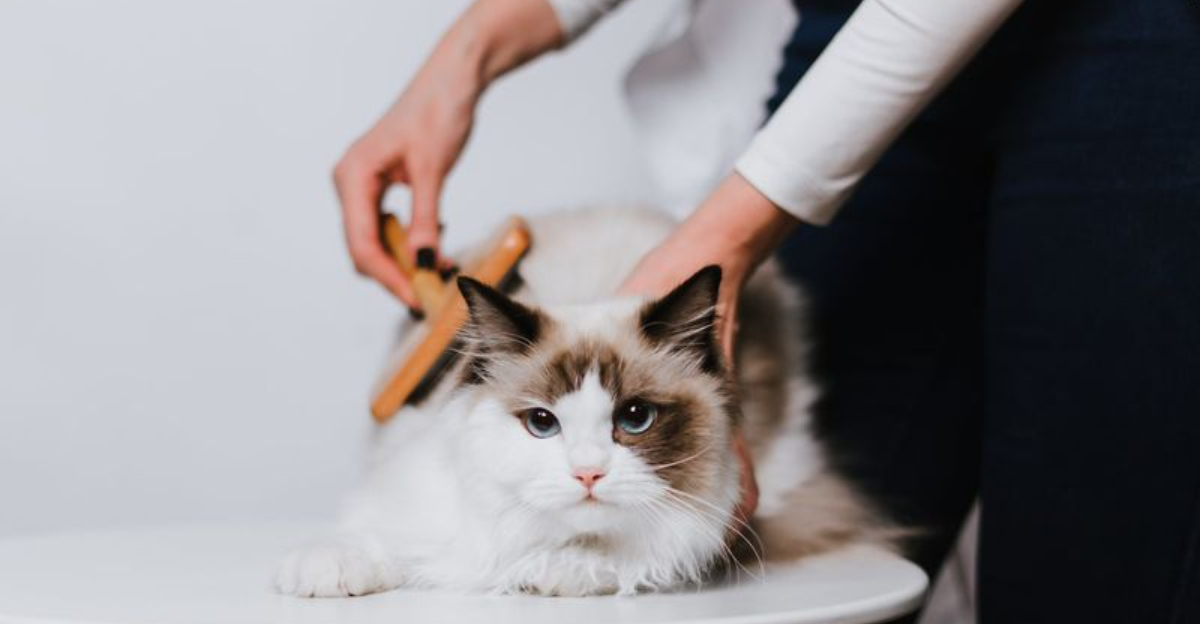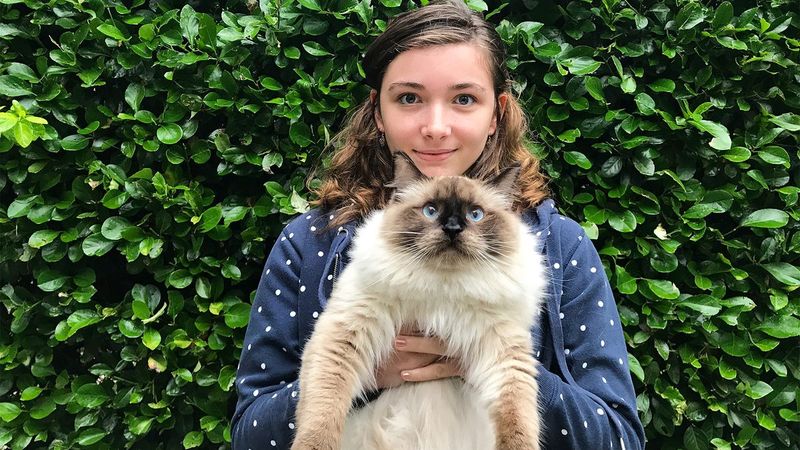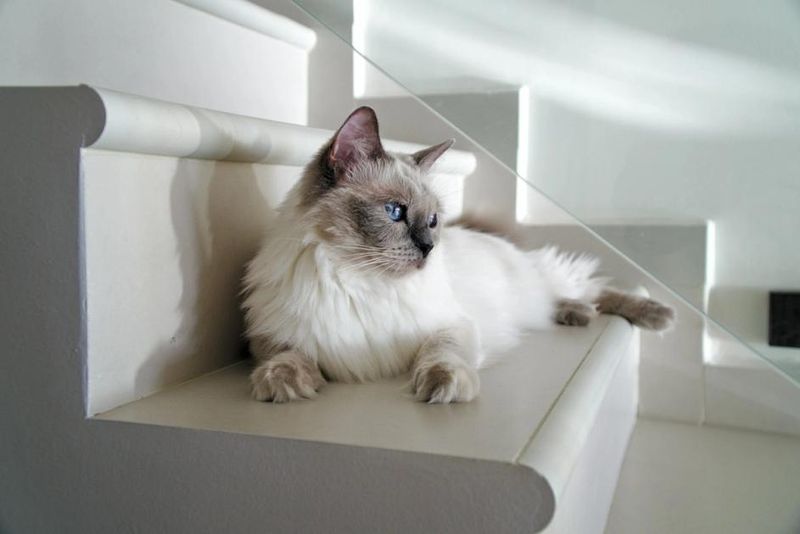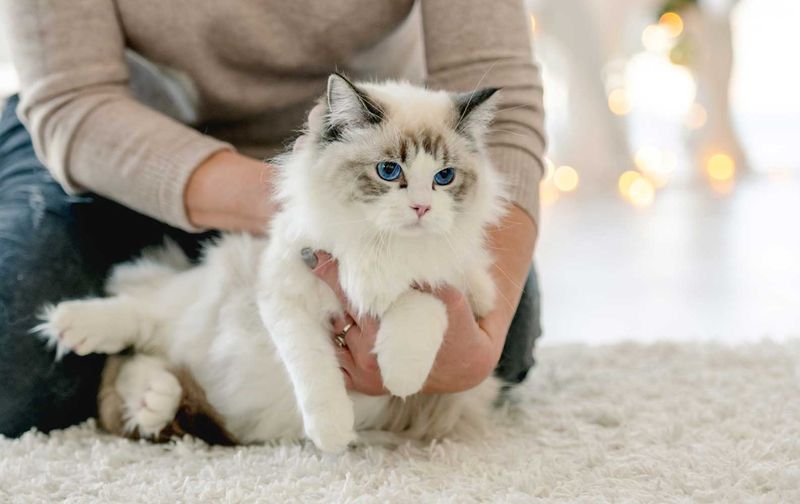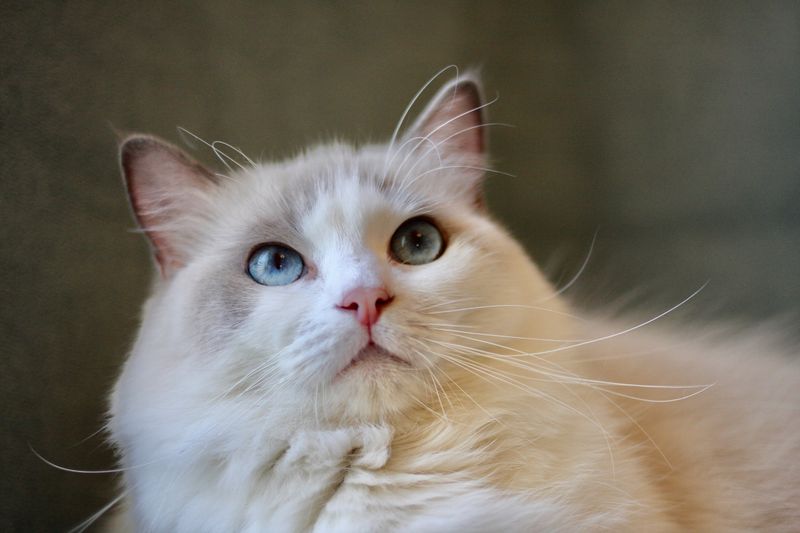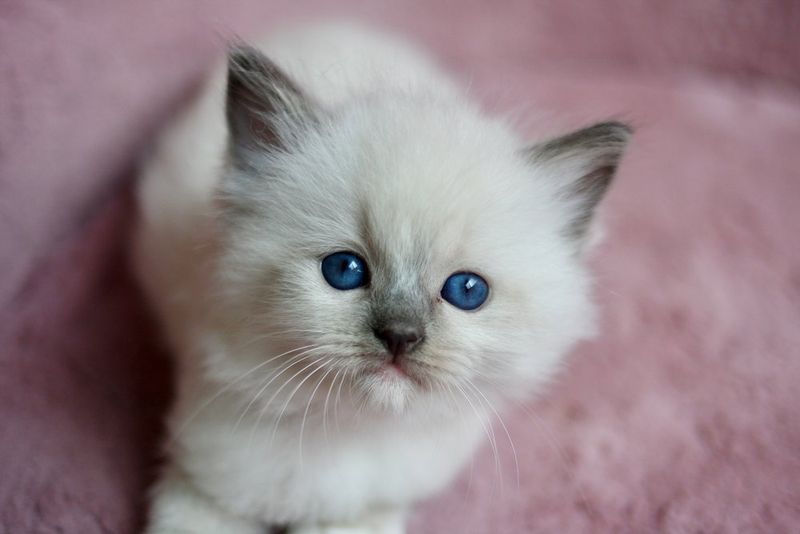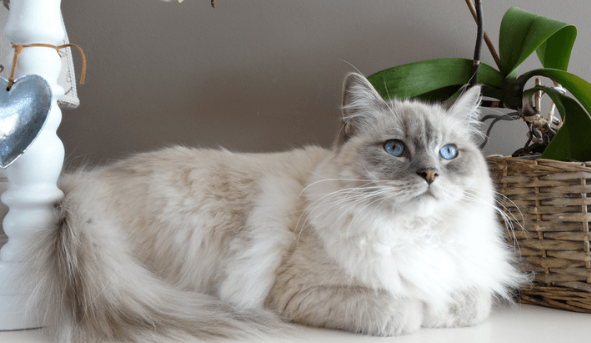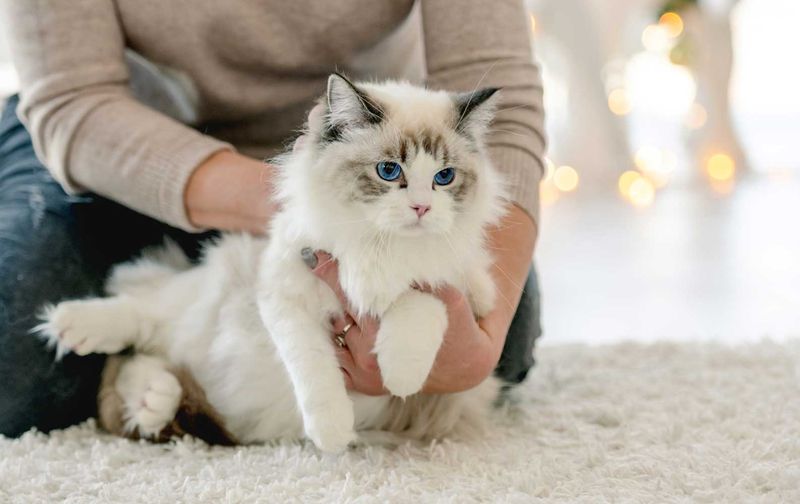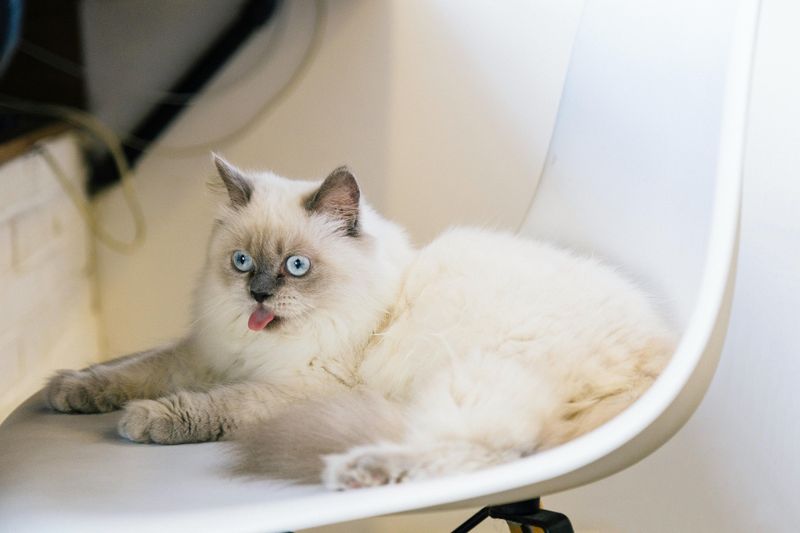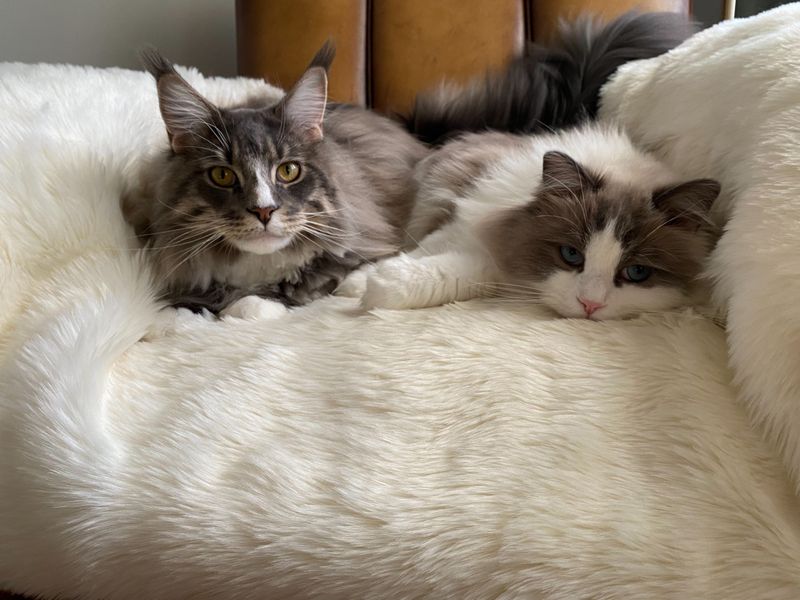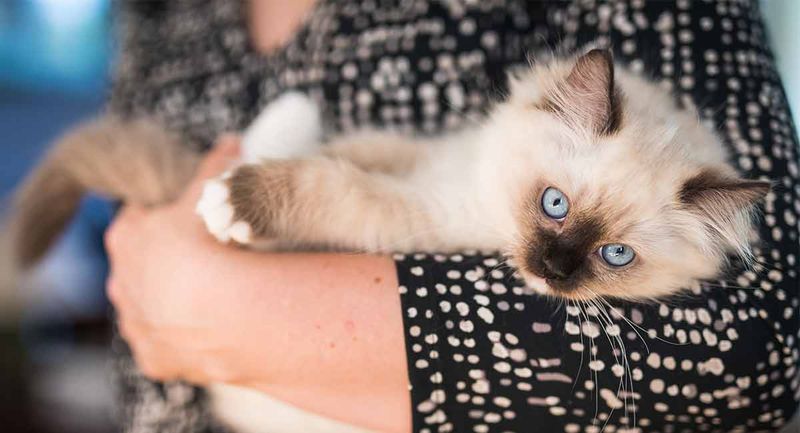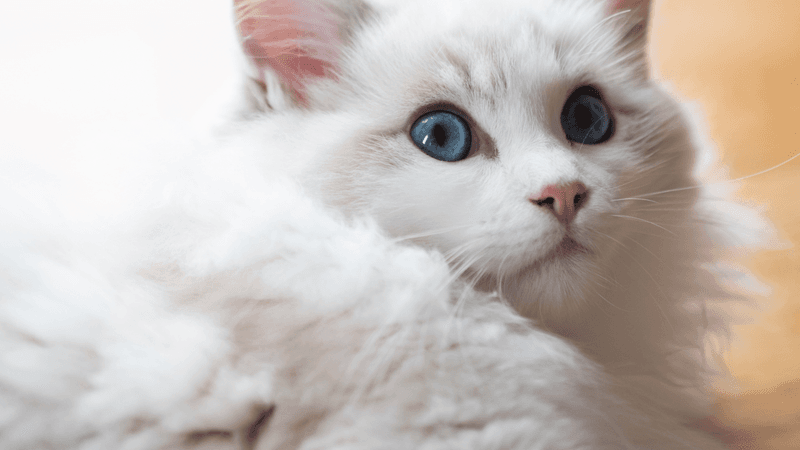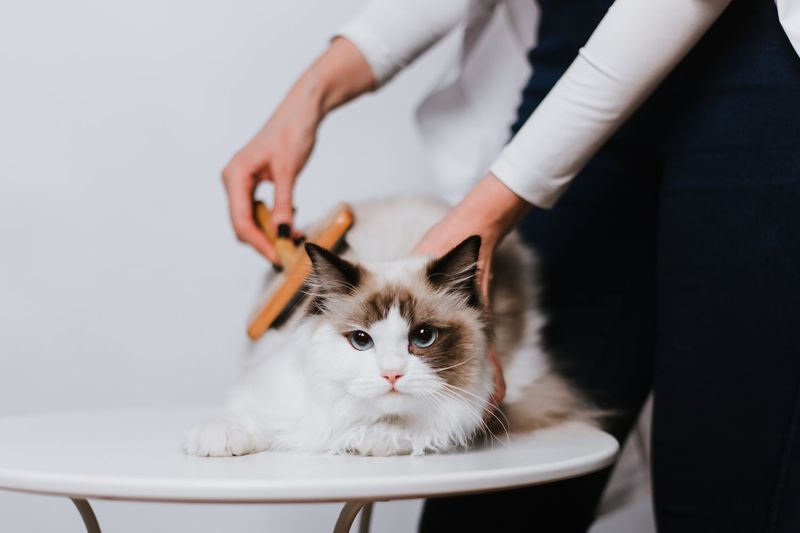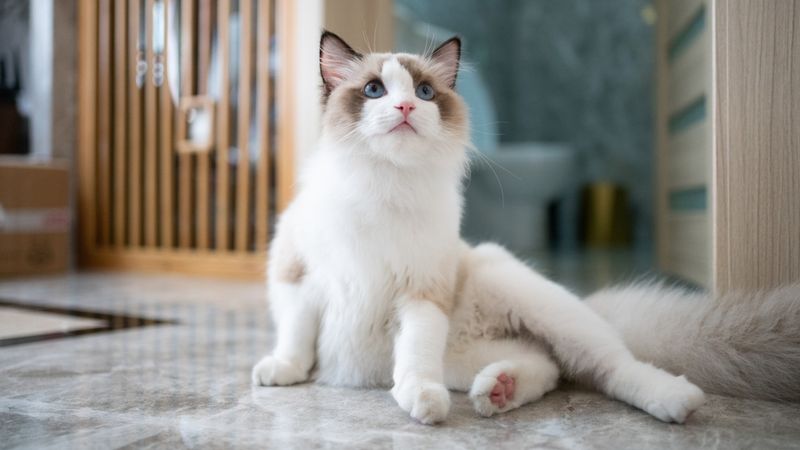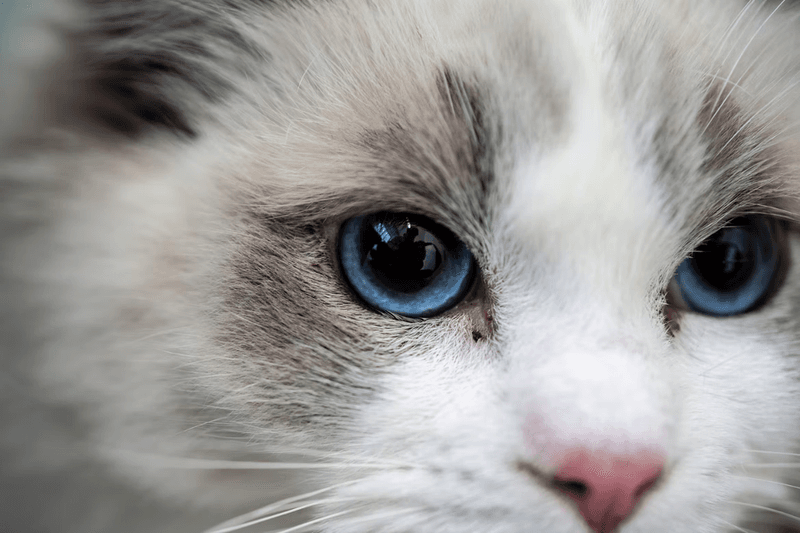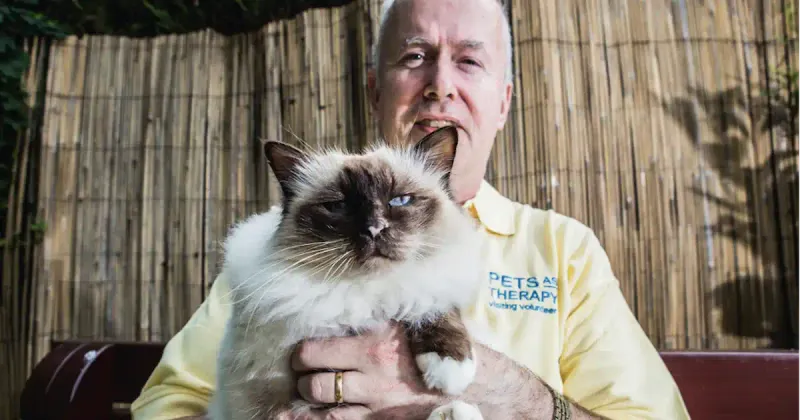📖 Table of Content:
- 1. They Go Limp When Picked Up
- 2. They Were Bred for Temperament
- 3. They’re a Relatively New Breed
- 4. They Have Striking Blue Eyes
- 5. They’re Born All-White
- 6. They Come in Several Color Patterns
- 7. They Love Human Company
- 8. They’re Not Big on Climbing
- 9. They’re Large Cats
- 10. They Mature Slowly
- 11. They’re Quiet and Soft-Spoken
- 12. They Have a Silky Coat
- 13. They’re Not Hypoallergenic
- 14. They’re Generally Healthy
- 15. They Excel at Therapy Work
Graceful, silky, and adorably affectionate, Ragdoll cats have captivated cat lovers around the world with more than just their glamorous appearance. With their piercing blue eyes and soft, plush coats, they seem almost too perfect to be real. Yet beyond the aesthetic appeal lies a unique breed with quirky traits and a gentle, loving personality that sets them apart from many of their feline peers.
Bred with an intentional focus on calm temperament and sociability, Ragdolls have an intriguing origin story and an array of behavioral characteristics that surprise even seasoned cat enthusiasts. They defy many common cat stereotypes—uninterested in solitude, indifferent to climbing, and famously relaxed in human arms. Every Ragdoll is a package of endearing qualities combined with some unexpectedly peculiar habits.
Whether you’re a curious pet parent, a feline aficionado, or just captivated by their charm, getting to know Ragdolls on a deeper level offers a fascinating glimpse into what makes them one of the most beloved cat breeds today. The following facts will illuminate aspects of their personality, biology, and behavior that even dedicated cat owners may not know.
1. They Go Limp When Picked Up
What truly sets Ragdolls apart is their uncanny ability to go limp in your arms like a floppy toy. This isn’t just a random quirk; it’s a defining trait that gave the breed its very name. Most cats tense up when lifted, but Ragdolls relax completely, surrendering to the sensation without resistance. That limpness makes handling them remarkably easy and can feel as though they trust you implicitly. Early breeders were fascinated by this docility and intentionally preserved it through selective breeding. It’s not just a gimmick—this relaxed response is tied to their even-tempered nature and low stress threshold. Their comfort in human hands reflects their deep-rooted desire for connection and affection.
2. They Were Bred for Temperament
Unlike many cat breeds that evolved naturally, Ragdolls were designed from the beginning to be calm, gentle, and affectionate. Ann Baker, their original breeder, focused on developing a feline companion that would be more sociable than aloof. Her mission was to create a breed that sought out human company and displayed predictable, gentle behavior. As a result, Ragdolls are often referred to as “puppy-like” in their interactions with people. They exhibit a consistently mellow disposition, which makes them especially good with children and other pets. Their personality isn’t just luck—it’s a hallmark of their carefully guided lineage. The breed’s temperament is arguably its most valuable and cherished trait.
3. They’re a Relatively New Breed
Ragdolls don’t have centuries of folklore or ancient temple origins behind them—they’re a thoroughly modern marvel. Developed in the 1960s in Riverside, California, they’re one of the youngest recognized cat breeds today. The breed’s creator, Ann Baker, began her work with a free-roaming white longhaired cat named Josephine. From there, a carefully curated breeding program led to the affectionate and striking cats we now know as Ragdolls. Despite their short history, they’ve quickly risen in popularity and have found a devoted fanbase worldwide. Official recognition from major cat associations came relatively fast, given their unique appeal. Their recent origins make their swift global acclaim all the more impressive.
4. They Have Striking Blue Eyes
Mesmerizing eyes are one of the Ragdoll’s most iconic features, captivating anyone who meets their gaze. Those deep sapphire or icy blue irises aren’t just beautiful—they’re also a breed standard for pedigreed Ragdolls. Unlike many other breeds that allow for eye color variation, true Ragdolls always have blue eyes. This trait is especially vivid in the colorpoint variations, where the contrast between the dark mask and light eyes is dramatic. The gene responsible for this eye color is tied to their point coloration pattern. It’s one of the reasons why Ragdolls seem to “pop” in photos and are often chosen for cat shows. Their eye color isn’t just cosmetic—it contributes significantly to their magnetic presence.
5. They’re Born All-White
Colorful as adult Ragdolls may be, they all begin life as blank slates—pure white kittens. Their distinctive markings and shades start to emerge only after about 8–10 days and continue to develop over several months. The full extent of their coloration can take up to three years to settle, especially in the deeper hues. This slow change adds an element of anticipation and surprise for breeders and pet owners alike. The reason for this delayed coloring lies in temperature-sensitive genes that darken cooler areas of the body. It’s a fascinating example of how genetics and environment interact to shape physical traits. Watching a Ragdoll kitten mature is like witnessing a work of art come to life.
6. They Come in Several Color Patterns
No two Ragdolls look exactly the same thanks to their diverse range of patterns and colorations. The primary patterns include colorpoint, mitted, and bicolor—each with its own specific set of features. Within those patterns, you’ll find colors like seal, blue, chocolate, lilac, red, and cream, often mixed with subtle variations. This rich diversity gives Ragdoll owners plenty of visual variety while still adhering to breed standards. Breeders often use this variety to enhance the elegance and balance of each litter. It also allows enthusiasts to choose a cat that fits their personal aesthetic preferences. The beauty of Ragdolls is not only in their faces, but in the unique palette each one wears.
7. They Love Human Company
Few cats are as clingy—in the best way—as Ragdolls when it comes to human interaction. Rather than hiding or remaining aloof, they actively seek out companionship and enjoy being close to their people. You’ll often find them trailing you from room to room, curious and content just to be nearby. Their loyalty and social nature make them fantastic emotional support animals. This desire for constant presence means they don’t do well in environments where they are frequently left alone. It’s not unusual for them to greet their humans at the door like a dog would. Their craving for closeness is a reflection of the trust and affection they’ve been bred to offer.
8. They’re Not Big on Climbing
Many cats view vertical space as a territory to be conquered, but Ragdolls tend to remain grounded. This breed generally prefers lounging on soft furniture or curling up beside you on the floor. Their less agile frame and calm demeanor mean they’re not inclined to leap atop cabinets or high perches. That doesn’t mean they’re lazy—they just prefer comfort over conquest. Owners often find this trait makes them easier to live with in small apartments or homes without cat trees. Their behavior reduces the need for high vertical enrichment, unlike with more active breeds. It’s just one more way Ragdolls differ from the typical feline archetype.
9. They’re Large Cats
When it comes to size, Ragdolls are gentle giants of the feline world. Males commonly reach 15 to 20 pounds, and some can even exceed that without appearing overweight. Females are generally smaller but still larger than average house cats. Their long, muscular frames give them a regal presence, often drawing comparisons to small dogs. Despite their size, they move gracefully and tend to be surprisingly gentle. Their mass adds to the satisfying feeling of holding one in your arms—they feel substantial, yet cuddly. Size, combined with temperament, makes them unforgettable pets.
10. They Mature Slowly
Patience is a virtue for anyone raising a Ragdoll kitten. Unlike most cats that mature within a year, Ragdolls can take up to four years to fully grow and develop their adult coat and color. During this time, you’ll notice changes in their fur density, body structure, and even color intensity. This extended development period is part of what makes their transformation so captivating. It’s common for owners to think their Ragdoll is done growing, only to be surprised by another growth spurt. The payoff is a fully developed cat that looks and behaves with serene elegance. Their slow maturation reflects the breed’s overall calm and unhurried nature.
11. They’re Quiet and Soft-Spoken
You won’t often hear a Ragdoll loudly announcing its presence. Their vocalizations are typically soft, delicate, and infrequent. They’ll communicate when needed—especially around mealtimes—but their voices remain gentle and non-demanding. This makes them a good choice for quieter households or people sensitive to noise. Even when expressing discontent, they do so in a reserved manner. Their quiet communication style reinforces their overall image as mellow and laid-back companions. While not silent, their voices are always in harmony with their calm demeanor.
12. They Have a Silky Coat
Touching a Ragdoll feels like running your hands through luxury. Their coat is medium to long in length and has a silky texture that’s reminiscent of rabbit fur. Unlike some long-haired breeds, their fur tends not to mat easily due to the lack of an undercoat. That means grooming them is easier than you’d expect—usually a couple of gentle brushes per week will suffice. Their coat not only feels lovely but also drapes gracefully, adding to their overall elegance. They rarely shed in clumps, and their maintenance routine is relatively low-stress. The combination of beauty and manageability is yet another reason why people adore them.
13. They’re Not Hypoallergenic
Allergies and Ragdolls, unfortunately, do not make a perfect match. Despite their silky fur and lower-maintenance grooming needs, Ragdolls still produce the protein (Fel d 1) that causes allergic reactions in sensitive individuals. Some people may find them slightly more tolerable than other breeds, but they are by no means hypoallergenic. It’s a common misconception fueled by their serene appearance and low shedding. Before bringing one home, allergy sufferers should spend time around the breed to gauge their reaction. Their personality may be irresistible, but health should always take precedence. Clarifying this early helps avoid heartbreak later.
14. They’re Generally Healthy
Overall, Ragdolls are considered to be a robust and healthy breed. However, they are known to be genetically predisposed to hypertrophic cardiomyopathy (HCM), a common feline heart condition. Responsible breeders often test for this and avoid breeding cats that carry the gene. Regular veterinary checkups and a balanced diet go a long way in keeping them healthy. While no breed is immune to illness, Ragdolls generally enjoy a long, contented life. Many live well into their mid-teens with proper care. Their genetic integrity and breeder vigilance play an important role in this longevity.
15. They Excel at Therapy Work
Therapists and emotional support programs increasingly recognize Ragdolls for their calming influence. Their gentle presence and love for physical touch make them ideal for people dealing with anxiety, trauma, or depression. It’s not just their temperament—they seem to intuitively sense emotional shifts and respond with affection. Many therapy cats are chosen specifically from the Ragdoll breed because of their predictable, unflappable nature. They are just as comfortable sitting quietly on a lap as they are mingling in a group setting. Their demeanor brings peace to hospitals, nursing homes, and therapy centers alike. For those seeking emotional healing, a Ragdoll can be a silent but powerful partner.
